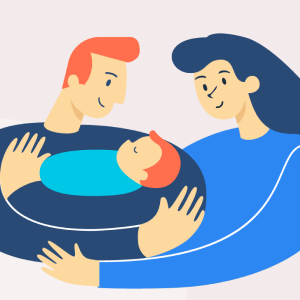Gastroparesis
Fakta Disemak oleh Hello Doktor Medical Panel
Gastroparesis is a disease of the muscles of the stomach or the nerves controlling the muscles that causes the muscles to stop working.
In a healthy person, the muscle of the stomach contracts and propel food through the digestive track. When a person has gastroparesis, it prevents your stomach from emptying food properly, thus causing nausea, vomiting and problems with blood sugar and nutrition.
How common is gastroparesis?
Young and middle-aged women are most likely to develop gastroparesis. It can be managed by reducing your risk factors. Please discuss with your doctor for further information.
Symptoms
What are the symptoms of gastroparesis?
The common signs and symptoms of gastroparesis are:
- Bloating and abdominal discomfort such as fullness, heaviness, pressure
- Persistent abdominal pain especially after eating
- Nausea, vomiting when eating too much
- Constipation
- Lack of appetite
- Neuropsychiatric symptoms such as insomnia, headache, dizziness, slow, and depression
- Low blood pressure, heart palpitations and standing of fainting and other symptoms
- Weight loss and malnutrition, visible slender body, upper abdominal tenderness
Sometimes you can hear the sound vibration of water below the belly button, upper abdominal palpable easy to take the initiative the pulse of the move, often accompanied by liver sagging, drooping kidney and colon for signs of sagging.
When should I see my doctor?
If you have any signs or symptoms listed above or have any questions, please consult with your doctor. Everyone’s body acts differently. It is always best to discuss with your doctor what is best for your situation.
Causes
What causes gastroparesis?
Some common causes of this condition are:
- Poor diet
- Lose of fat
- Weak muscles
- Any physical disorder
- Injury to the inner walls of abdomen
Risk factors
What increases my risk for gastroparesis?
There are a great number of risk factors for gastroparesis but these below are considered as the most common ones, including:
- Skinny people
- When you lack in fat or muscle your stomach starts to sag downward.
- Weak innate endowment factors
- Physical deficiency, acquired can be summarized as eating disorders, chronic illness or birthing excessive, impassioned illegal and so on
Diagnosis & Treatment
The information provided is not a substitute for any medical advice. ALWAYS consult with your doctor for more information.
How is gastroparesis diagnosed?
To diagnose gastroparesis, your doctor will review your symptoms and medical history. He or she will also give you a physical exam and may order certain blood tests, including blood sugar levels. Other tests used to diagnose and evaluate gastroparesis may include:
- Upper gastrointestinal (GI) endoscopy. This procedure is used to visually examined with a small camera attached at the end of a small long tube. The tube will be guided through your mouth to check the upper stomach system (the esophagus, the stomach and beginning of the small intestine).
- Computerized tomography (CT) enterography and magnetic resonance (MR) enterography. These tests can give a more accurate diagnosis for finding inflammation or blockage in the intestines. MR enterography is a radiation-free alternative.
- Upper gastrointestinal (GI) series. This is a series of X-rays in which you drink a white, chalky liquid (barium) that coats the digestive system to help abnormalities show up.
- Gastric emptying study. This test involves eating a light meal, such as eggs and toast, that contains a small amount of radioactive material. A scanner that detects the movement of the radioactive material is placed over your abdomen to monitor the rate at which food leaves your stomach. This is the most important test used in making a diagnosis of gastroparesis.
- Breath test. This test involves drinking a small amount of sugar water and then measuring the amount of gas processed by your body (metabolized) in the breath.
How is gastroparesis treated?
Gastroparesis is a chronic (long-lasting) condition. This means that treatment usually doesn’t cure the disease. But there are steps you can take to manage and control the condition.
- Medications. Some patients may benefit from medications, including:
- Reglan (metoclopramide): You take this drug before eating and it causes the stomach muscles to contract and move food along. Reglan also decreases the incidence of vomiting and nausea. Side effects include diarrhea, drowsiness, anxiety, and, rarely, a serious neurological disorder.
- Erythromycin: This is an antibiotic that also causes stomach contractions and helps move food out. Side effects include diarrhea and development of resistant bacteria from prolonged exposure to the antibiotic.
- Antiemetics: These are drugs that help control nausea.
- Change your eating habits. Strengthening exercises to enhance muscle tension and frequent meals, correct bad habits of posture. Besides, increasing the nutritional and digestive aid given to protein synthesis and insulin preparations to increase intra-abdominal fat, if necessary, to strengthen the abdominal muscles tension.
- Using additional treatments. Chinese medicine treatment such as traditional Chinese medicine, acupuncture.
- Surgical treatment. Some people with gastroparesis may be unable to tolerate any food or liquids. In these situations, doctors may recommend a feeding tube be placed in the small intestine. Or doctors may recommend a gastric venting tube to help relieve pressure from gastric contents.
Lifestyle changes & Home remedies
What are some lifestyle changes or home remedies that can help me manage gastroparesis?
The following lifestyles and home remedies might help you cope with gastroparesis:
- Breads, cereals, crackers, ground or pureed meats
- Vegetables – cooked and, if necessary, blenderized/strained
- Fruits – cooked and, if necessary, blenderized/strained
- Juices, beverages, milk products, if tolerated
- Small, frequent meals
If you have any questions, please consult with your doctor to better understand the best solution for you.
Penafian
Hello Health Group tidak menawarkan nasihat perubatan, diagnosis atau rawatan.
Fakta Disemak oleh
Hello Doktor Medical Panel





















Komen
Kongsi komen anda
Ayuh jadi yang pertama untuk memberi komen!
Sertai Kami atau Log Masuk untuk menghantar komen